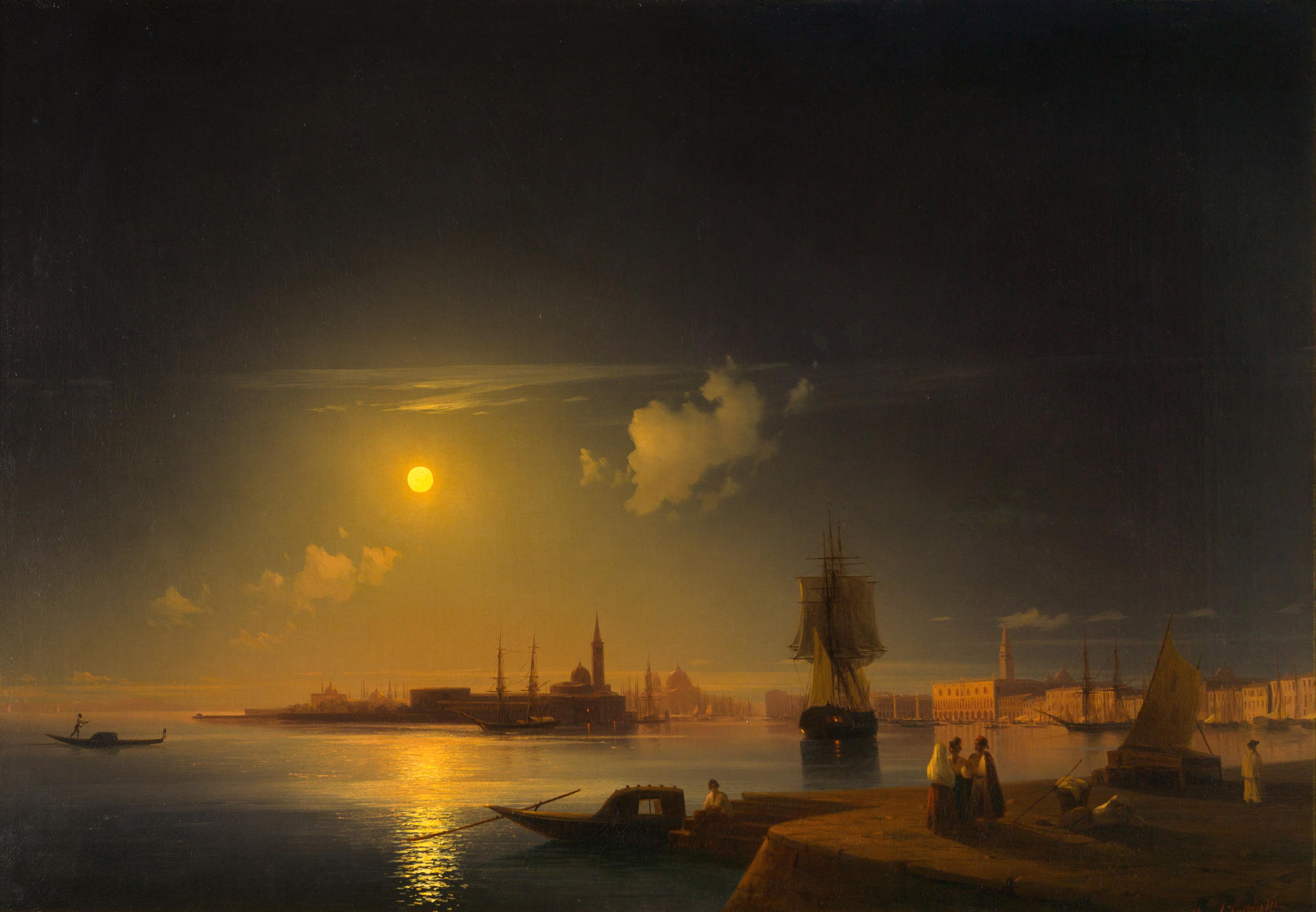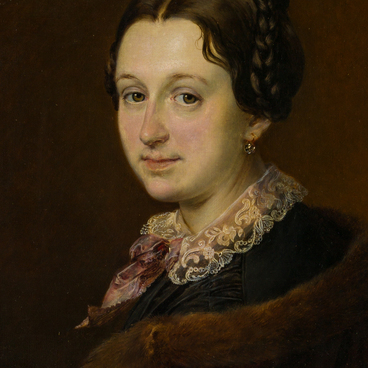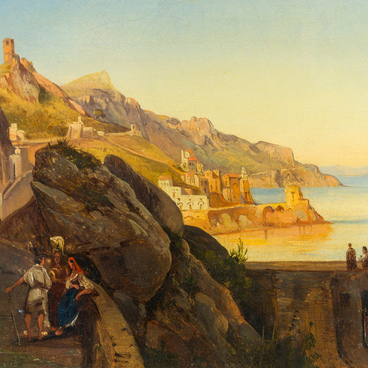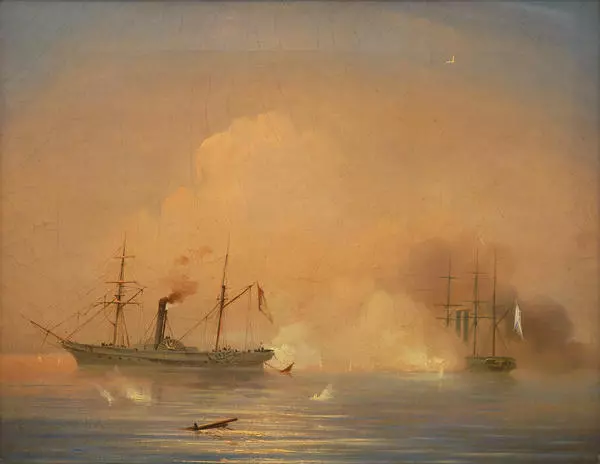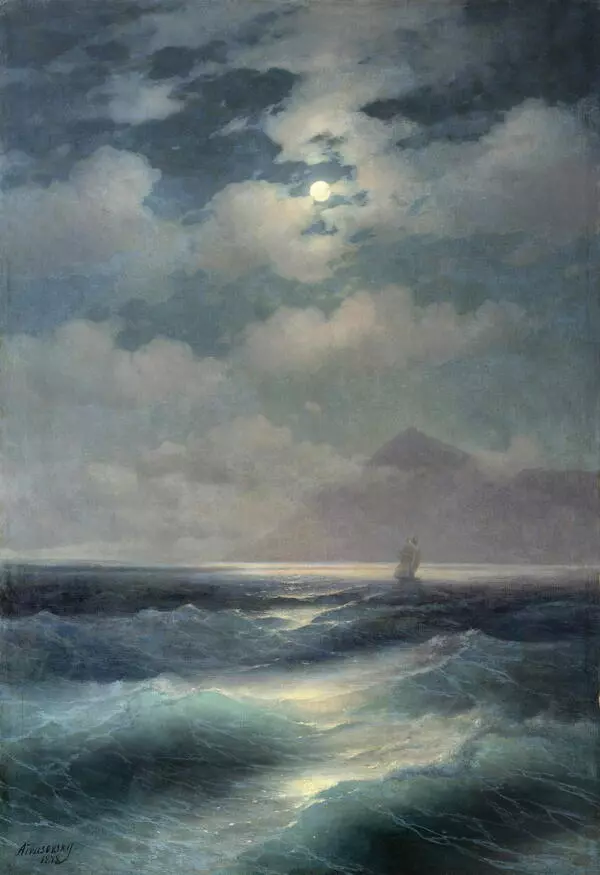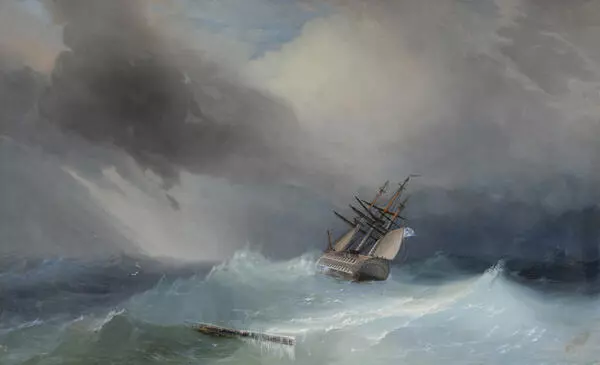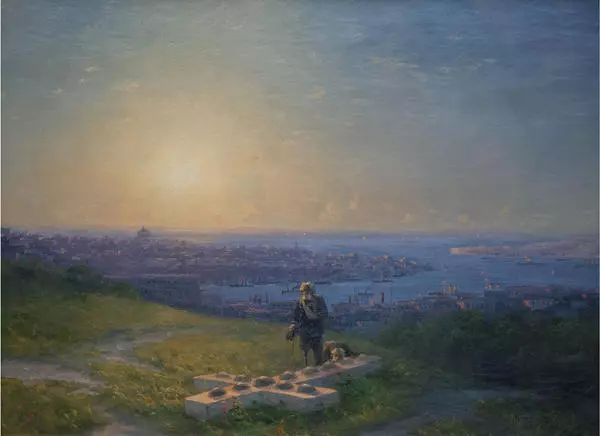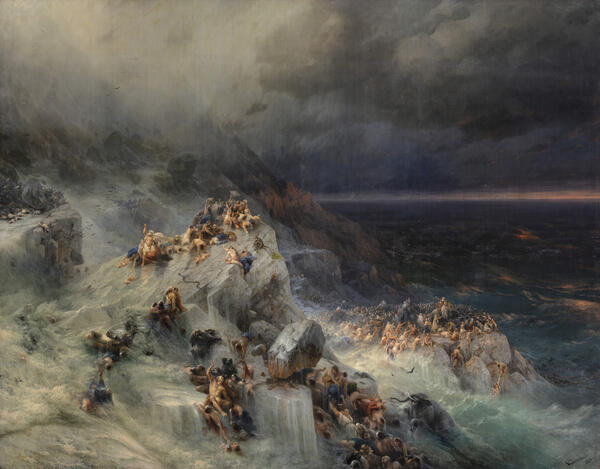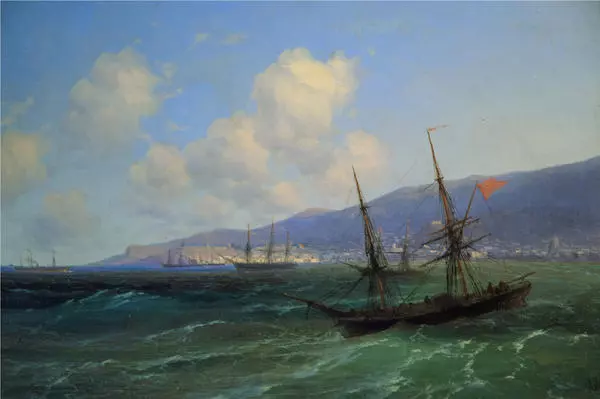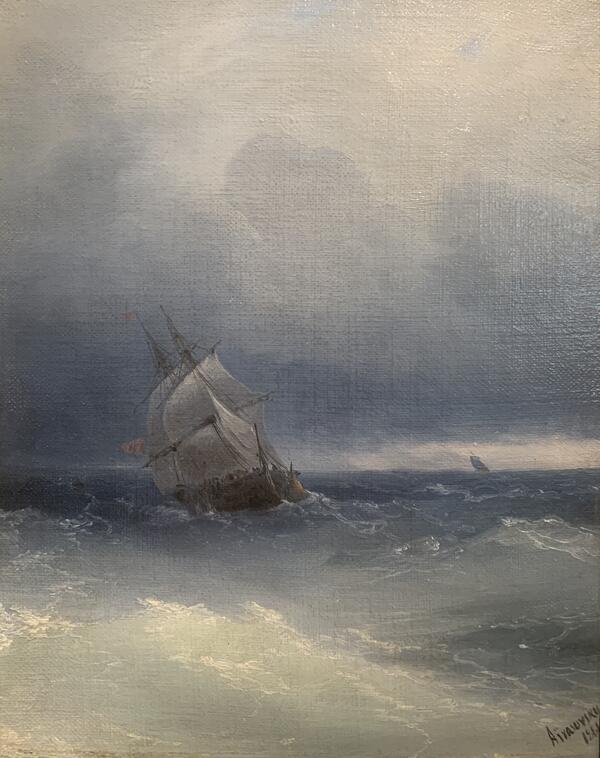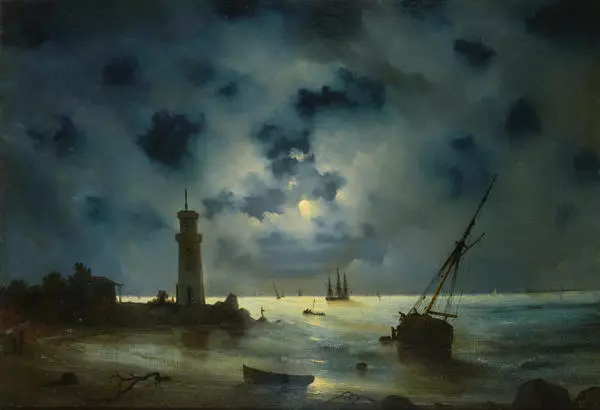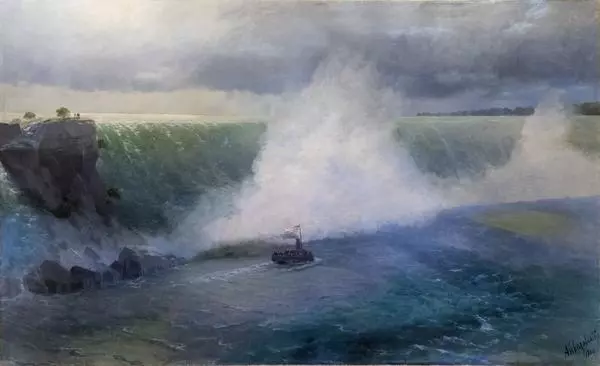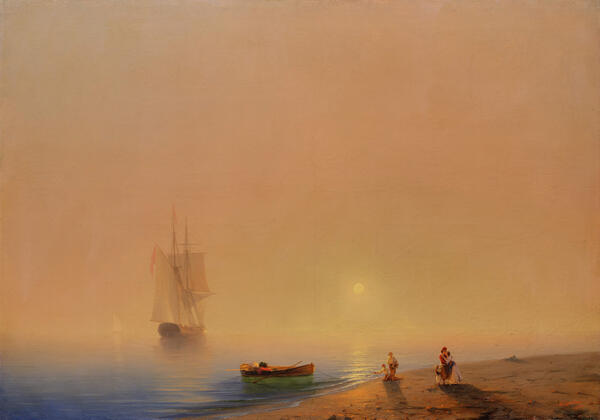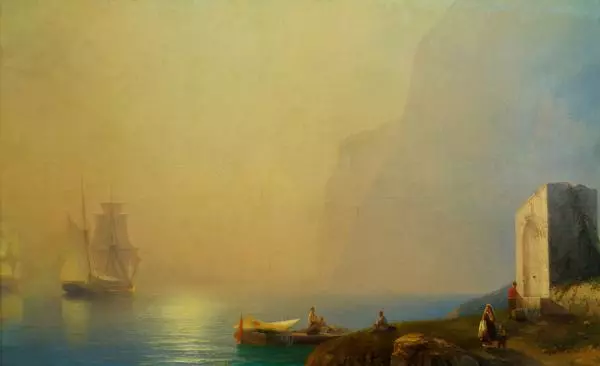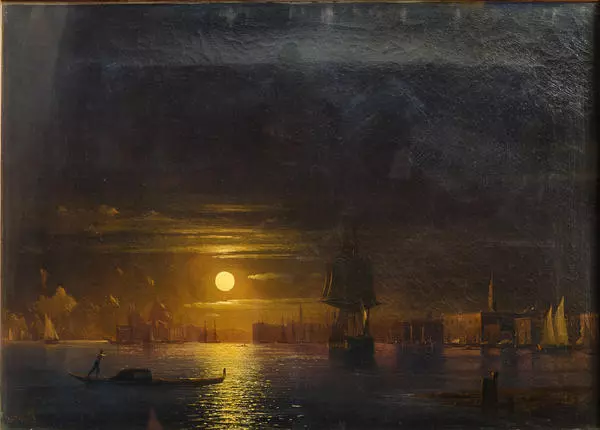Romanticism in the 19th century landscape painting was most prominent in the art of Ivan Konstantinovich Aivazovsky (1817 – 1900), the famous master of seascapes. The painter practiced his own style, first painting from nature in the open air, then completing the painting in his studio. In the open air he managed to capture the reality of the seascape, while further work was dedicated to elimination of unwanted details and strengthening certain artistic effects.
The painting A Night in Venice is a classic example of a romantic landscape. Ivan Aivazovsky successfully captured all the beauty and fascination of the southern night in an Italian town. Deep knowledge of all details of the sea is translated into the inaccuracy of the moonlight, radiating on the water surface and reflecting on the shore. The enigmatic charm of the sea and the sky seems even more beautiful against gondolas silently gliding on water surface.
Ivan Aivazovsky looked beyond depiction of nature. He skillfully complemented the composition with small figures of local residents. The lonely gondolier and Venetians leisurely strolling along the waterfront contribute to the idyll.
The artist captured every detail of the night on the Grand Canal with such knowledge that the painting thrills the viewer. Especially noteworthy is the preciseness of the painted moon and moonlight. The lightness of the clouds and the depth of the sky create a wonderful contrast that highlights the opposition of the sea and the land.
In the background, the artist painted some buildings; they seem accidental but only at first sight. In fact, the buildings are traced so meticulously that the image of the night town would have been incomplete without them. Sometimes they practically blend into the sea surface, which seems to roll with a light breeze. That night zephyr replaced the long hot day and provided town residents with long-awaited coolness.
A Night in Venice is one of Aivazovsky’s early paintings. Created in Italy in 1847, it conveys a state of serene tranquility and does not at all resemble his later “rebellious” paintings The Ninth Wave and The Wave that brought the painter world-wide fame.
This painting appeared in the collection of the Bashkortostan State Art Museum in 1929 thanks to the initiative and efforts of Mikhail Vasilyevich Nesterov.
The painting A Night in Venice is a classic example of a romantic landscape. Ivan Aivazovsky successfully captured all the beauty and fascination of the southern night in an Italian town. Deep knowledge of all details of the sea is translated into the inaccuracy of the moonlight, radiating on the water surface and reflecting on the shore. The enigmatic charm of the sea and the sky seems even more beautiful against gondolas silently gliding on water surface.
Ivan Aivazovsky looked beyond depiction of nature. He skillfully complemented the composition with small figures of local residents. The lonely gondolier and Venetians leisurely strolling along the waterfront contribute to the idyll.
The artist captured every detail of the night on the Grand Canal with such knowledge that the painting thrills the viewer. Especially noteworthy is the preciseness of the painted moon and moonlight. The lightness of the clouds and the depth of the sky create a wonderful contrast that highlights the opposition of the sea and the land.
In the background, the artist painted some buildings; they seem accidental but only at first sight. In fact, the buildings are traced so meticulously that the image of the night town would have been incomplete without them. Sometimes they practically blend into the sea surface, which seems to roll with a light breeze. That night zephyr replaced the long hot day and provided town residents with long-awaited coolness.
A Night in Venice is one of Aivazovsky’s early paintings. Created in Italy in 1847, it conveys a state of serene tranquility and does not at all resemble his later “rebellious” paintings The Ninth Wave and The Wave that brought the painter world-wide fame.
This painting appeared in the collection of the Bashkortostan State Art Museum in 1929 thanks to the initiative and efforts of Mikhail Vasilyevich Nesterov.
